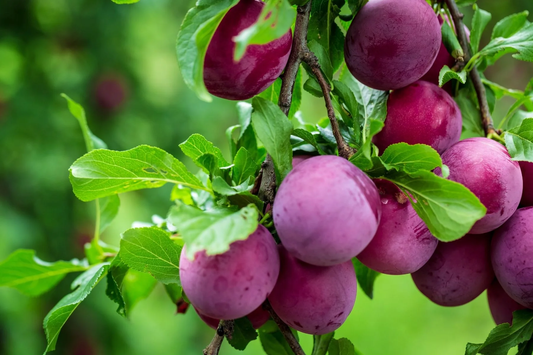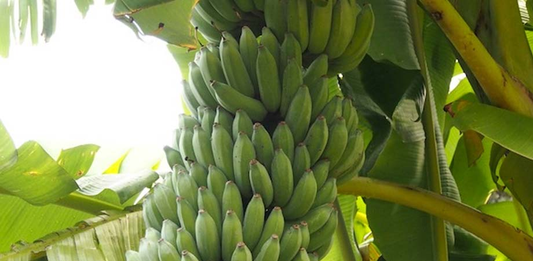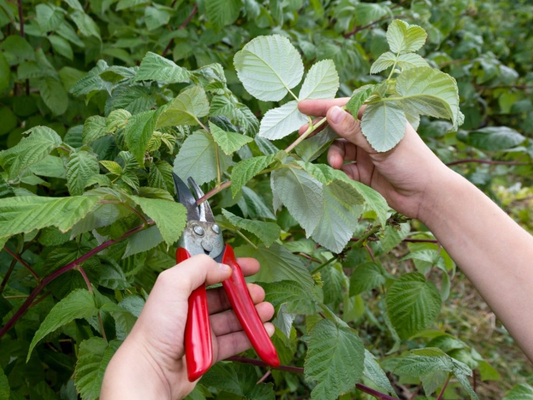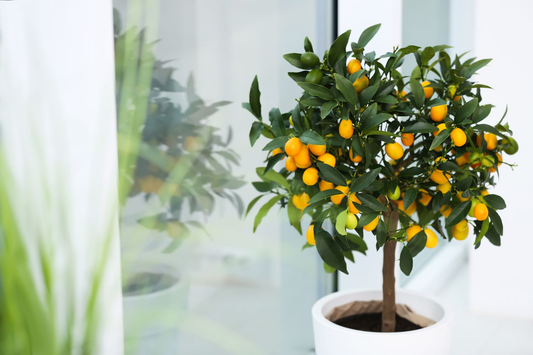Buy Native Plants for Landscaping and Create a Beautiful, Resilient Garden
Share
1. Introduction: Why Choose Native Plants for Landscaping?
Landscaping your garden is an exciting way to express creativity, improve your home’s curb appeal, and create a peaceful outdoor sanctuary. One of the most rewarding choices for landscaping is to buy native plants. These plants not only enhance the beauty of your garden but also bring many practical benefits. Whether you are a seasoned gardener or just starting, native plants are a great option that offers environmental, aesthetic, and financial advantages.
What Are Native Plants? Native plants are species that have evolved naturally in a specific region and have adapted to the local climate, soil, and wildlife over thousands of years. Unlike non-native plants, which may require special care or adjustments to thrive, native plants are naturally suited to the environment in which they grow. This means they tend to be more resilient, pest-resistant, and drought-tolerant, making them ideal for low-maintenance landscaping.
Here are a few reasons why native plants are an excellent choice for your landscape:
- Environmental Benefits: Native plants support local ecosystems by providing food and shelter for wildlife, reducing water consumption, and preventing soil erosion.
- Aesthetic Appeal: Native plants bring natural beauty to your landscape with a variety of colors, textures, and shapes that blend seamlessly with your surroundings.
- Cost-Effective: Once established, native plants require minimal maintenance, reducing the need for fertilizers, pesticides, and excessive watering, which translates to long-term savings.
By choosing to buy native plants for landscaping, you are making a positive contribution to environmental conservation while enjoying a vibrant and resilient garden. Let’s explore the many advantages of incorporating native plants into your outdoor space!

2. The Environmental Benefits of Native Plants
Choosing native plants for landscaping is not only a visually appealing option but also an environmentally conscious choice. These plants offer several environmental benefits that help conserve resources, support wildlife, and enhance local ecosystems. Below are some of the key environmental advantages of incorporating native plants into your garden:
-
Conservation of Water and Reduction of Irrigation Needs
Native plants are well adapted to local climates, meaning they can thrive with minimal water once established. They are more drought-resistant compared to non-native species, significantly reducing the need for irrigation in your garden. This is especially important in areas experiencing water scarcity or where water conservation is a priority. By using native plants, you can cut down on water waste and lower your water bills while helping to preserve this vital resource.
-
Supporting Local Wildlife and Biodiversity
Native plants provide crucial habitats for local wildlife, including insects, birds, and mammals. These plants form the base of the food chain, offering food sources such as nectar, berries, seeds, and leaves for native species. Additionally, native plants contribute to a balanced ecosystem by fostering biodiversity. They attract pollinators like bees, butterflies, and hummingbirds, which are essential for pollination in your garden and surrounding areas. By choosing native plants, you're helping to protect and preserve local wildlife populations.
-
Reduced Need for Pesticides and Fertilizers
Because native plants have evolved to thrive in their specific environments, they are naturally more resistant to pests and diseases. Unlike non-native plants, which may require chemical treatments for pest control, native plants typically require fewer pesticides and fertilizers. This reduces the environmental impact associated with these chemicals, which can harm beneficial insects, pollute water sources, and degrade soil health. Using native plants can lead to a healthier, more sustainable garden that requires less chemical intervention.
-
Strengthening Local Ecosystems and Improving Soil Health
Native plants are key players in strengthening local ecosystems. They help maintain the integrity of the soil by improving its structure and preventing erosion. Their deep root systems hold soil in place, reduce runoff, and allow water to infiltrate the ground more effectively. Native plants also contribute organic matter to the soil, improving its fertility and supporting beneficial microorganisms. Over time, this results in healthier soil that requires less artificial intervention.
3. Types of Native Plants to Buy for Landscaping
When choosing native plants for your landscaping project, it's important to consider a variety of plant types that can serve different roles in your garden. From towering trees that provide shade to colorful flowers that attract pollinators, native plants can be categorized into four main groups: trees, shrubs, flowers, and grasses. Each category has unique characteristics that make them suitable for specific landscaping needs. Below, we explore each plant type and provide examples of common native plants that you can incorporate into your garden.
-
Trees
Native trees are often the backbone of any landscaping design, providing shade, shelter, and even food for wildlife. Trees are generally long-lived and can help create a natural structure for your landscape. Some native trees, like Red Maple and Oak, also offer beautiful seasonal changes with vibrant foliage in the fall.
-
Shrubs
Native shrubs are versatile and can be used for creating privacy, hedges, or even attracting wildlife. These plants often thrive in the understory of forests, where they enjoy partial shade. Some shrubs, like Azaleas and Blueberries, also produce edible fruits, making them a dual-purpose plant in your landscape.
-
Flowers
Native flowers are fantastic for adding color and visual appeal to your garden. These flowers are often drought-tolerant and attract beneficial pollinators like bees, butterflies, and hummingbirds. Flowers such as Echinacea and Black-eyed Susan are great for creating vibrant, low-maintenance beds.
-
Grasses
Native grasses are ideal for erosion control and adding texture to your garden. They tend to thrive in a variety of soil types and growing conditions, from moist soils to dry, rocky areas. Grasses like Switchgrass and Big Bluestem are not only functional but also visually appealing with their tall, flowing forms.
Table: List of Common Native Plants and Their Characteristics
| Plant Type | Plant Example | Ideal Growing Conditions | Benefits |
|---|---|---|---|
| Trees | Red Maple, Oak | Full sun, well-drained soil | Shade, wildlife habitat |
| Shrubs | Azalea, Blueberry | Partial shade, acidic soil | Privacy, berry production |
| Flowers | Echinacea, Black-eyed Susan | Full sun, well-drained soil | Colorful blooms, drought-tolerant |
| Grasses | Switchgrass, Big Bluestem | Full sun, moist soil | Erosion control, texture |
Understanding the characteristics of each plant type is essential for creating a landscape that meets both your aesthetic and functional needs. Whether you're looking to attract wildlife, create privacy, or add vibrant colors, native trees, shrubs, flowers, and grasses offer a diverse range of possibilities for every garden.
4. How to Select the Right Native Plants for Your Landscape
Selecting the right native plants for your landscaping project requires careful consideration of several factors to ensure that the plants thrive in your garden. The goal is to match plants to your specific environment, taking into account climate, soil type, sun exposure, available space, and the intended use of the plants. Here’s how to choose the best native plants for your landscape:
-
Climate
The climate in your region plays a crucial role in determining which native plants will thrive. Consider temperature extremes, rainfall patterns, and seasonal variations when selecting plants. Some native plants are adapted to specific climate zones, so choose plants that are well-suited to your area's weather conditions. For example, plants in arid regions will have different needs than those in temperate zones.
-
Soil Type
Different plants have varying soil preferences. Before selecting plants, determine your garden’s soil type—whether it’s clay, sandy, or loamy—and its pH level. Native plants typically grow best in the soil conditions they evolved in. For instance, blueberries thrive in acidic, well-drained soil, while many trees prefer neutral to slightly acidic soils.
-
Space Available
Take note of how much space is available for planting. Trees and shrubs require more room to grow, while flowers and grasses may be more suitable for smaller spaces or borders. Consider the mature size of the plants and ensure there is enough space for their root systems to expand without overcrowding. If space is limited, opt for compact varieties or plants that grow well in containers.
-
Sun Exposure
Consider how much sunlight your garden receives throughout the day. Some native plants thrive in full sun, while others prefer partial or full shade. Knowing the sun exposure in different areas of your garden will help you choose the right plants. For example, sun-loving plants like Black-eyed Susans and Switchgrass will thrive in bright areas, while Azaleas do better in shady spots.
-
Intended Use
Think about the purpose of the plants in your landscape. Are you looking to create a privacy screen, attract pollinators, or add vibrant color? Plants like shrubs and trees can provide privacy and structure, while flowers and grasses are excellent for adding visual interest and supporting wildlife. Identifying the purpose of each plant will help you make the best choices for your garden’s overall design.
How to Research and Choose Native Plants Suited for Your Area
To find the best native plants for your area, start by researching which plants are native to your region. Local gardening resources, books, and websites are great places to start. Look for plant lists specific to your state or USDA hardiness zone, which will help you find plants that are well-suited to your climate and soil conditions. Additionally, consult local gardening experts or extension services to get recommendations for plants that have proven to thrive in your area.
Resources for Finding Native Plant Nurseries and Guides
There are several resources you can use to find native plant nurseries and guides to help you choose the best plants for your landscape:
- Native Plant Societies: Many regions have local native plant societies that offer plant sales, workshops, and informational guides.
- Online Nurseries: Websites like Xroci offer a selection of native plants for sale, with expert guidance on plant care.
- Extension Services: State universities and agricultural extension offices often provide free resources and plant lists specific to your area.
- Plant Identification Apps: Apps like iNaturalist can help you identify native plants in your area and learn more about their needs.
By considering these factors and using the right resources, you can select the perfect native plants that will thrive in your landscape, ensuring long-term beauty, resilience, and sustainability.

5. Designing a Resilient Garden with Native Plants
Designing a garden with native plants is not only about selecting the right species, but also about planning a layout that supports their natural growth patterns and ecological needs. By considering factors like sunlight, shade, water availability, and integrating hardscapes, you can create a resilient and sustainable garden that thrives year-round. Here are some essential tips for designing your native plant garden:
-
Planning Your Garden Layout
The first step in designing a resilient native plant garden is creating a thoughtful layout. Take time to map out your garden and decide where each plant will go based on its needs. Some plants prefer full sun, while others thrive in shady spots, and some may need specific soil conditions. Group plants with similar water and sunlight requirements together to reduce maintenance and increase their chances of thriving. Consider using layers in your design—tall trees or shrubs in the back, medium-height plants in the middle, and shorter ground covers or flowers in the front to create depth and interest.
-
Creating a Balance of Sun, Shade, and Water Needs
A successful garden design takes into account the balance between sun, shade, and water. Native plants are adapted to thrive in specific conditions, so it's essential to place them in areas that match their light and moisture preferences:
- Full Sun: Plants like Black-eyed Susan, Coneflower, and Switchgrass are ideal for sunny areas.
- Partial Shade: Azaleas and Blueberries thrive in spots with a mix of sun and shade.
- Full Shade: Ferns, hostas, and some native groundcovers are perfect for shaded areas.
Watering needs should also be considered. Plant moisture-loving species in areas with natural drainage or where irrigation systems are easy to install. Avoid planting drought-tolerant species in overly wet conditions, as this could lead to root rot.
-
Companion Planting with Native Plants
Companion planting is a great way to enhance the health and resilience of your garden. Native plants can support each other in various ways, such as attracting beneficial pollinators, improving soil health, and deterring pests. For example, planting native wildflowers like Milkweed alongside native grasses can help attract pollinators such as bees and butterflies. Grouping plants with different blooming periods can also ensure continuous visual interest and nectar availability throughout the seasons.
-
Integrating Native Plants with Hardscapes
Integrating native plants with hardscapes such as walkways, patios, and retaining walls can create a harmonious and functional garden design. Consider the following tips for blending plants with hardscapes:
- Walkways: Use low-growing groundcovers, such as creeping thyme or moss, between stones to create a natural look and encourage foot traffic.
- Patios: Add containers with native plants like Lavender or Coneflowers to soften the edges and enhance the space with color.
- Retaining Walls: Use plants like ferns, wild ginger, or creeping Jenny that can spill over the edges of the walls and reduce erosion.
Ensure that your hardscapes allow for easy maintenance and that native plants are placed in areas where they will thrive without excessive pruning or maintenance. A well-designed garden integrates both plants and hardscapes in a way that requires minimal resources and enhances the overall aesthetic appeal.

6. Water Conservation and Maintenance Benefits of Native Plants
Native plants are naturally adapted to their local climate and environment, which makes them incredibly efficient when it comes to water conservation and reducing maintenance. By incorporating native plants into your garden, you can enjoy a beautiful landscape that requires minimal watering and care. Here's how native plants contribute to water conservation and reduce maintenance needs:
-
Reducing the Need for Irrigation
Native plants have evolved to thrive in their specific environments, which means they are well-suited to the local climate and require much less water than non-native species. Many native plants are drought-tolerant and can survive on rainfall alone, reducing the need for regular irrigation. This not only helps conserve water but also reduces your water bills. Additionally, by grouping plants with similar water needs together, you can optimize water usage throughout your garden.
-
Minimizing Maintenance Requirements
One of the biggest advantages of native plants is that they require less ongoing maintenance compared to non-native species. Here's how they reduce garden maintenance:
- Pruning: Native plants generally grow at a slower, more controlled rate, so they require less frequent pruning and trimming.
- Fertilizing: Most native plants are adapted to grow in local soils, meaning they do not require additional fertilizers. This reduces the cost and effort of fertilizing plants throughout the year.
- Pest Management: Native plants are naturally resistant to local pests and diseases, reducing the need for chemical pest control and promoting a healthier, chemical-free garden.
-
Preventing Soil Erosion
Native plants play a vital role in stabilizing the soil, especially in areas prone to erosion. Their deep root systems help bind the soil together, preventing it from washing away during heavy rains or irrigation. This is particularly beneficial for gardens on slopes or areas with poor drainage. Native plants can effectively control erosion while maintaining the integrity of the soil, ensuring a healthier and more resilient landscape.
7. How to Care for Your Native Plants
Once you've selected and planted your native plants, it's important to care for them to ensure they thrive and continue to enhance your garden. Fortunately, native plants are low-maintenance and well-suited to their environment, but they still require some attention to grow successfully. Here's a guide to caring for your native plants:
-
Watering Needs for Native Plants
Native plants are generally drought-tolerant and need less water than non-native species. However, during their first year of growth, they will require consistent watering to establish their roots. Once they are established, most native plants can survive on rainfall alone. Water them deeply to encourage deep root growth and avoid shallow watering, which can lead to weak plants. Always check the specific needs of each plant, as some may have more specific water requirements.
-
Pruning and Maintaining Native Trees, Shrubs, and Flowers
Native plants are generally low-maintenance, but occasional pruning will help maintain their shape and health. Here are some tips:
- Trees: Prune dead or damaged branches, especially during the dormant season, to maintain tree health.
- Shrubs: Remove spent flowers and dead wood to encourage new growth and improve the plant's appearance.
- Flowers: Deadheading (removing spent blooms) helps promote more flowers and keeps the plant looking tidy.
Avoid heavy pruning, as native plants tend to grow naturally and may not need much intervention. Only prune when necessary to remove damaged or diseased parts.
-
Soil Management and Fertilization Tips
Native plants are adapted to local soils, so they often do not require additional fertilization. However, if the soil is poor, a light application of compost can help improve its structure and nutrient content. Here are a few soil tips:
- Soil Drainage: Ensure your garden has proper drainage, as native plants generally prefer well-drained soils.
- Soil pH: Most native plants prefer slightly acidic to neutral soil. If you're unsure of your soil's pH, consider having it tested and amend accordingly.
- Compost: Use organic compost to enrich the soil and provide natural nutrients to your plants.
-
Pest Control Methods Without Harsh Chemicals
Native plants are more resistant to pests and diseases, but some common pests may still appear. Instead of relying on chemical pesticides, try these eco-friendly alternatives:
- Beneficial Insects: Encourage beneficial insects such as ladybugs and lacewings to control pests naturally.
- Neem Oil: Use neem oil as a natural insect repellent that is safe for plants and animals.
- Hand-Picking: Manually remove visible pests like aphids or caterpillars from your plants.
- Companion Planting: Plant pest-repellent species like marigolds alongside your native plants to deter pests naturally.
By avoiding harsh chemicals, you help maintain the health of your garden, protect pollinators, and promote biodiversity.

8. Common Mistakes to Avoid When Buying Native Plants for Landscaping
While native plants offer many benefits for landscaping, it's important to avoid common mistakes that could undermine the success of your garden. Here are some key mistakes to watch out for when purchasing and planting native species:
-
Not Researching the Plants’ Suitability for Your Region
One of the biggest mistakes gardeners make is purchasing native plants without ensuring they are suited to their local climate and soil conditions. Not all native plants thrive in every region, even if they are considered "native." Always research the specific growing conditions, climate zones, and soil preferences of the plants you are considering to ensure they will thrive in your garden.
-
Overwatering or Underwatering Native Plants
Native plants are adapted to specific rainfall conditions, and watering requirements vary depending on the plant type. Overwatering or underwatering can stress the plants and hinder their growth. Most native plants are drought-tolerant once established, so it's essential to provide consistent, deep watering during their first year and avoid excessive watering once they’re established.
-
Choosing Plants That Don’t Support Local Wildlife
One of the benefits of planting native species is supporting local wildlife, including pollinators, birds, and beneficial insects. However, some native plants may not provide food or habitat for local creatures. When selecting plants, ensure they offer nectar, seeds, or shelter for wildlife, helping to maintain a healthy, balanced ecosystem.
-
Failing to Account for Full Plant Maturity and Space Requirements
Native plants can grow larger than you might expect. It's crucial to plan for the full maturity of the plant, both in terms of height and spread. Planting too closely together or failing to consider the space requirements of certain species can lead to overcrowding, poor air circulation, and reduced plant health. Be sure to space plants according to their mature size to allow for healthy growth.
Avoiding these common mistakes will help ensure your native plants thrive, creating a resilient, beautiful, and sustainable landscape.

9. How Native Plants Contribute to Sustainable Landscaping
Native plants play a vital role in creating sustainable landscapes that conserve resources, reduce waste, and support local ecosystems. By choosing native species for your landscaping, you're making a conscious decision to embrace eco-friendly practices that promote environmental health. Here are some of the key ways native plants contribute to sustainable landscaping:
-
The Role of Native Plants in Reducing the Carbon Footprint
Native plants contribute to reducing the carbon footprint in several ways:
- Carbon Sequestration: Native plants naturally absorb carbon dioxide from the atmosphere and store it in their biomass, helping to offset greenhouse gas emissions.
- Reduced Resource Consumption: Since native plants are adapted to local conditions, they require fewer resources such as water, fertilizers, and pesticides, reducing the overall environmental impact of your landscaping.
- Lower Energy Consumption: Native plants that provide shade or reduce the heat island effect in urban areas help reduce the need for air conditioning in nearby buildings, lowering energy consumption and associated carbon emissions.
-
Promoting Environmental Stewardship and Conservation Efforts
Using native plants is a powerful way to promote environmental stewardship. These plants support biodiversity by providing habitat and food sources for local wildlife. Native plantings help:
- Support Local Wildlife: Native plants provide the food and shelter that local wildlife species, including birds, pollinators, and insects, depend on for survival.
- Maintain Local Ecosystems: By choosing plants that naturally thrive in the area, you help maintain the health and stability of local ecosystems and contribute to the preservation of natural habitats.
- Conserve Water: Native plants are well-suited to local rainfall patterns, which reduces the need for irrigation and conserves water, a precious resource.
-
How Native Plants Fit into Larger Sustainable Landscaping Practices
Native plants are a cornerstone of sustainable landscaping practices, which aim to create low-maintenance, resource-efficient gardens. These practices often include:
- Water-Efficient Landscaping: Native plants' drought tolerance helps reduce the need for supplemental irrigation, promoting water conservation and sustainability.
- Soil Health Improvement: Many native plants have deep roots that improve soil structure and prevent erosion, enhancing soil health naturally.
- Reduction of Chemical Inputs: Native plants are more resistant to local pests and diseases, reducing the need for chemical pesticides and fertilizers, which can harm the environment.
By incorporating native plants into your landscape design, you contribute to a broader movement toward sustainable land management that conserves resources, supports biodiversity, and mitigates climate change.
10. Frequently Asked Questions (FAQ)
Here are some common questions about native plants and their use in landscaping:
-
Are native plants easier to grow than non-native species?
Native plants are generally easier to grow than non-native species because they are adapted to local soil, climate, and environmental conditions. They have evolved over time to thrive in the region, making them more resistant to pests, diseases, and climate extremes. They typically require less care and maintenance than non-native plants that may need additional water, fertilizer, and pest management.
-
Can I grow native plants in all types of soil?
While native plants are well-suited to local conditions, their adaptability to different soil types can vary. Some native plants thrive in specific soil conditions, such as acidic, sandy, or clay soils, while others are more tolerant of a range of soil types. It is important to research the specific native plants you're interested in to understand their soil preferences and ensure they are compatible with your garden's soil.
-
What are the best native plants for low-maintenance gardens?
For a low-maintenance garden, consider native plants that require minimal care and thrive in your local environment. Some of the best native plants for low-maintenance gardens include:
- Black-eyed Susan (Rudbeckia hirta): A drought-tolerant, hardy flower that requires little care.
- Switchgrass (Panicum virgatum): A versatile grass that is easy to grow and maintain.
- Eastern Red Cedar (Juniperus virginiana): A low-maintenance tree that adapts well to various soil conditions.
- Blueberry (Vaccinium spp.): A shrub that provides berries and requires minimal care once established.
-
Do native plants attract pests?
Native plants generally attract fewer pests compared to non-native species because they have evolved with local insects and other wildlife. In many cases, they also support beneficial insects, such as pollinators, which can help reduce pest problems. However, like all plants, they can still be susceptible to local pests, so it's important to monitor them and address any issues promptly. The key benefit of native plants is that they tend to be more resilient and less reliant on chemical treatments for pest control.
-
How can native plants improve my garden’s aesthetics?
Native plants bring a unique beauty to your garden with their diverse colors, textures, and shapes. Many native species offer vibrant flowers, rich foliage, and interesting textures that change throughout the seasons. Examples include:
- Wild Lupine (Lupinus perennis): Known for its stunning blue flowers.
- Purple Coneflower (Echinacea purpurea): A beautiful perennial with large, daisy-like flowers.
- Virginia Bluebell (Mertensia virginica): Early spring bloomers with bell-shaped flowers.
Native plants also attract wildlife, adding another layer of interest to your garden by bringing birds, butterflies, and bees into your space.
-
Are native plants more affordable than traditional landscaping plants?
While native plants can sometimes be more expensive initially, they offer long-term savings by requiring less water, fewer fertilizers, and minimal pest control. Additionally, because they are adapted to local conditions, they are more likely to thrive without frequent replacements or costly interventions. Over time, the savings on water bills, fertilizers, and maintenance make native plants a more affordable option for landscaping.
-
Can I buy native plants online?
Yes, you can purchase native plants online from a variety of reputable sources. Many online nurseries specialize in native plants and can provide detailed information about each plant's suitability for your region. Some trusted websites to consider include:
- XROCI
- Native Nursery
- Prairie Nursery
Before purchasing, it's important to research the best native plants for your climate and garden conditions to ensure success.
11. Conclusion
Choosing native plants for your landscaping offers numerous benefits, from conserving water and reducing maintenance to supporting local wildlife and enhancing the beauty of your garden. Native plants are naturally adapted to your local climate, ensuring a healthier, more sustainable garden with minimal effort. By making the eco-friendly choice to buy native plants, you contribute to a more resilient environment while enjoying a beautiful, low-maintenance landscape. Start transforming your garden today with native plants and reap the rewards of a thriving, eco-conscious landscape.
Additional Resources
How to Plant Seeds in Spring: Start Your Garden Adventure Right Now! – XRoci
How to Care for Hanging Plants Indoors: Easy Hacks for Gorgeous, Healt – XRoci
How to Grow Lettuce in Pots: The Ultimate Guide to Fresh, Homegrown Gr – XRoci




